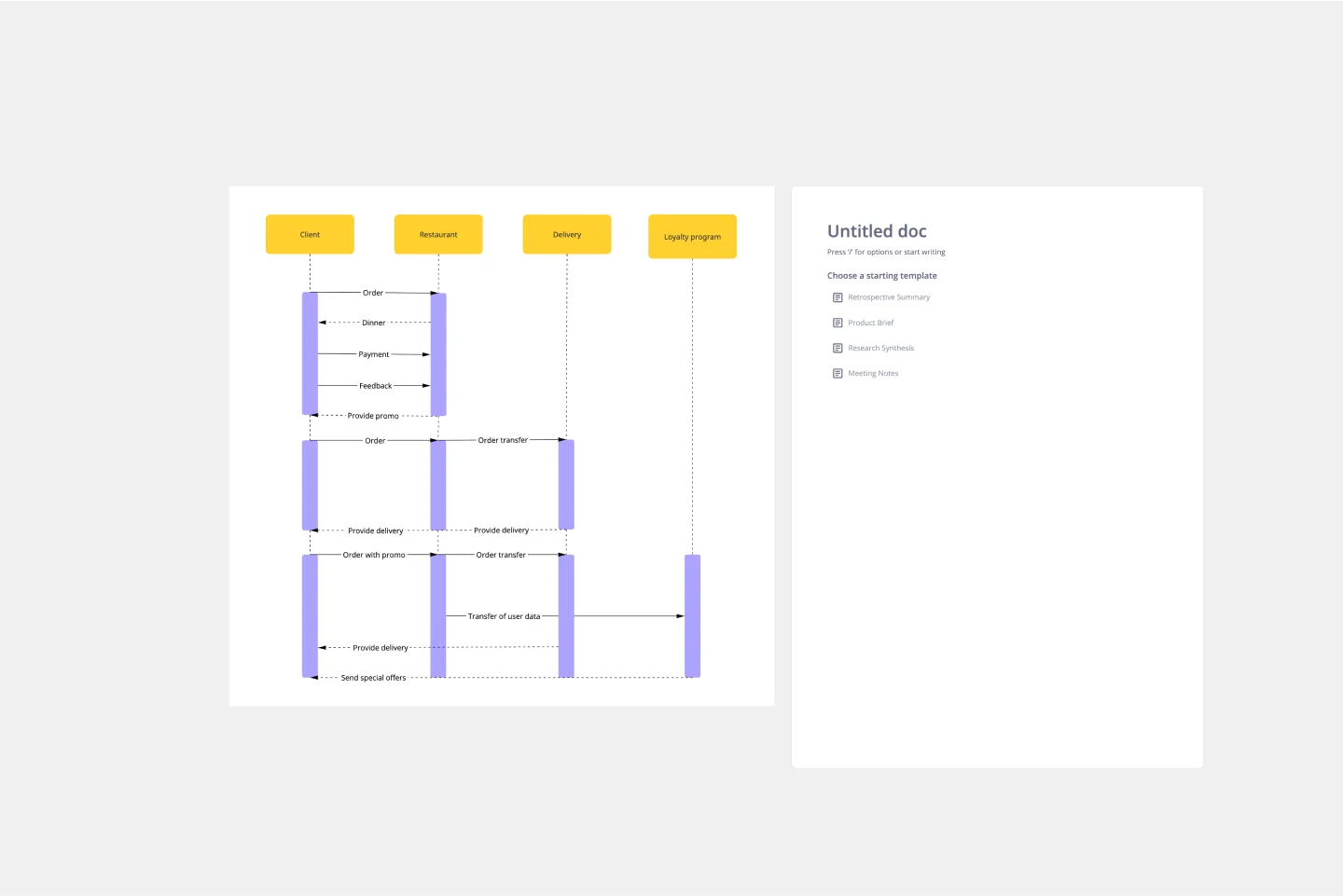About the UML Sequence Registration Process Template
The UML Sequence Registration Process Template in Miro is designed to depict the interactions among the user interface, server, and database during the registration of a new user on a website. This template serves as a visual representation of how different components or objects in a system interact with each other over time, illustrating the order of events and the flow of control. It's an invaluable tool for software engineers and system designers to map out and understand the sequence of actions that occur during user registration, ensuring a smooth and efficient workflow.
How to use the UML Sequence Registration Process Template
Customization: Miro comes equipped with all the UML shapes and features you need to customize the template or create a diagram from scratch. Once you have selected the UML Sequence Registration Process Template, you can start editing it to fit your specific needs. This involves adding, removing, or modifying the components and interactions based on your system's architecture.
Collaboration: Invite your team to collaborate on the diagram in real time or asynchronously. Miro’s collaborative features allow team members to review, comment on, and edit the diagram together, ensuring that everyone is on the same page and contributing to the system design.
Review and finalize: Once the diagram is complete, review it with your team to ensure accuracy and completeness. Based on team feedback, make any necessary adjustments. The final diagram can then be used as a reference in system development or documentation.
Why use the UML Sequence Registration Process Template
Using the UML Sequence Registration Process Template in Miro has several benefits:
Efficiency: Quickly visualize the registration process without starting from scratch, saving time and effort.
Clarity: Provides a clear and detailed visual representation of the registration process, helping to identify potential issues or bottlenecks early in the design phase.
Collaboration: Facilitates effective team collaboration, allowing team members to contribute their insights and feedback, leading to a more robust system design.
Customization: With Miro’s flexible editing tools, the template can be easily tailored to fit the specific needs of your project. This adaptability ensures that the diagram accurately reflects the unique aspects of your system's registration process.
Integration: Miro supports integration with text-to-diagram apps such as PlantUML and Mermaid, allowing for the automatic generation of UML diagrams. This feature streamlines the creation process, making it faster and more efficient.
Comprehensiveness: The UML Sequence Registration Process Template is part of a broader collection of UML diagram templates available in Miro. This variety enables teams to document and visualize different aspects of their systems comprehensively, from registration processes to e-commerce checkouts and deployment pipelines.
Educational value: Working with the template provides a learning opportunity for teams new to UML or sequence diagrams. It helps them understand the significance of sequence diagrams in system design and how they can improve communication and documentation.
Professional Development: Using advanced diagramming templates like the UML Sequence Registration Process Template contributes to team members' professional growth. It enhances their technical documentation skills and deepens their understanding of system design principles.


